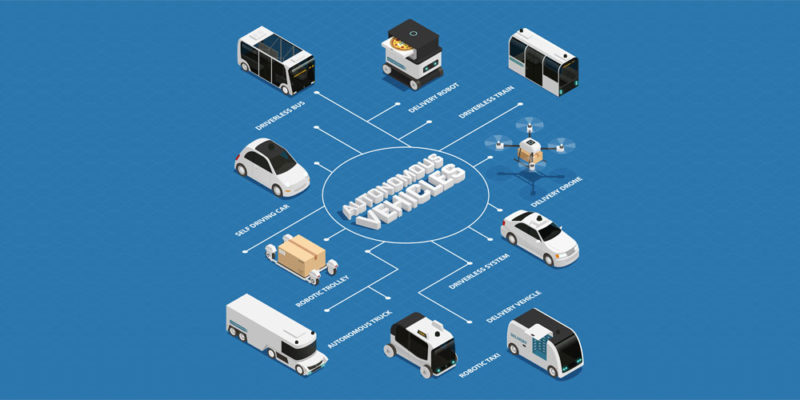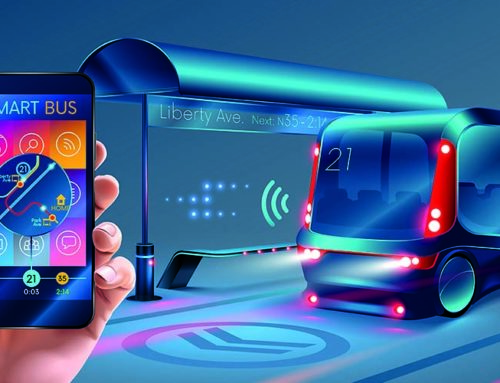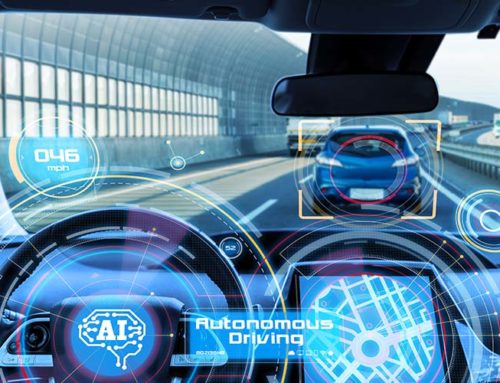It is predicted that by 2030, 95 percent of U.S. passenger miles traveled will be done through autonomous vehicles. This disruption in transportation will have consequential reach in both the U.S. and abroad. The enormous implications of this technology-driven disruption are compelling policymakers and civic leaders to make pivotal economic decisions.
Certain policymakers are already developing systems to effortlessly move from human-driven transport to an autonomous vehicle economy. For instance, the United Arab Emirates has developed a global platform for self-driving transport through initiatives like the Dubai World Congress for Self-Driving Transport.
Organised by the Government of Dubai, helmed by the Dubai Roads and Transport Authority (RTA) and supported by His Highness Sheikh Mohammed Bin Rashid Al Maktoum, Vice President and Prime Minister of the UAE and Ruler of Dubai, this initiative aims to highlight the economic and technological impact of self-driving vehicles.
Autonomous vehicle technology is transformative. Its near-limitless potential can reshape the global economy, significantly impacting how humans and goods travel. Moreover, once autonomous vehicle technology becomes fully realised, disruptions will inevitably follow.
Certain sectors will be challenged, particularly private car ownership, commercial road transport, and urban design and planning. These sectors, among others, will need to address the technological revolution that autonomous vehicles present.
Sticking to the status quo can result in these sectors becoming obsolete.
However, policymakers and civic leaders are not the only ones impacted by this technological revolution. Investors and multinational entities have already invested billions of dollars into research and development and startup acquisitions.
The growing ecosystem required to support autonomous vehicle technology has many investors scrambling to take the lead. Numerous players are jockeying for position to capture a bigger share of this emerging market.
Defining driverless vehicle technology
There are layers of autonomy that contribute to enable manual driving to fully autonomous driving. This ranges from Level 0 where all driveable systems are controlled by humans, to Level 5 where a fully autonomous system navigates every driving scenario.
Autonomous vehicles are also not single devices.
The makeup of self-driving transport encompasses far more than artificial intelligence (AI) and machine learning. While AI and machine learning powers each vehicle’s driveability, there are numerous systems supporting this functionality.
Beyond AI and machine learning, there is a constellation of technologies providing necessary real-time information leading to safety-critical driving decisions. These include communication systems, navigation technology, sensor arrays, and advanced camera technologies.
Without these components, reliability and security can be compromised. This can result in critical operational decisions becoming severely inefficient.
Gauging the economic impact of autonomous vehicles
The potential return on investments of autonomous vehicles provides considerable value to investors. Simply put, the market opportunity for investors is huge. To put this into context, we highlight several significant technology and mobile companies all making a play for autonomous vehicle technology.
Tesla’s commitment to electric autonomous mobility is coming into fruition. Their recent acquisition of SolarCity, worth US $2 billion, is targeted towards this electric autonomous mobility business model.
Global management consulting firm, A.T. Kearney estimates that Tesla’s play in autonomous vehicle technology will create new markets (in-vehicle apps and services) that could be worth US $51 billion in 2020, and grow to US $298 billion by 2035.
Tesla isn’t the only automotive firm making a bid for self-driving transport.
In 2016, General Motors announced a partnership with the ride-sharing company, Lyft, valued at US $500 million. The focus of this partnership is to transform Lyft’s ride-share vehicles into a centralised fleet of autonomous electric vehicles.
This will be complete with new commercial services such as onboard beauty salons, dining services, mobile healthcare (on-the-go clinics), and pod hotels.
Public transit is also embracing the limitless possibility of self-driving transport. 2getthere, an automotive company specializing in automated transit networks, has existing and ongoing automated transit network projects for municipalities such as Brussels, Amsterdam, and Dubai.
The Dubai 2getthere project converges with Dubai’s Autonomous Transport Strategy, the ambitious strategy of making 25 percent of all transportation trips smart and driverless by 2030. 2getthere’s automated transit network in Dubai aims to encourage more people to take automated public transport to key tourist destinations like Bluewaters.
Emerging commercial transport investments
The passenger economy is not the only segment with investment potential. Businesses are looking to self-driving transport to extend their commercial offerings. Domino’s Pizza, in partnership with Ford, has begun a pilot program in Miami to test “how humans interact with self-driving delivery vehicles.”
Amazon and Google continue to battle for aerial supremacy. While Amazon’s “aerial fulfillment centers” have been early movers, Google has made significant strides in dispatching one of the first drone delivery services.
Wing, a startup owned by Google’s parent company, Alphabet, has received FAA approval to make commercial deliveries in the U.S., making it the first drone delivery company to do so.
With the estimated global market for transportation service set at roughly US $4 trillion, there is also significant investment opportunity in automated fleet management and “Transportation-as-a-Service” (TaaS).
Whether it’s automated heavy trucks or automated commercial vans, autonomous vehicle technology enables B2B distribution centers and fleet management services to run at much higher utilization rates.
This effectively enables commercial transport services to run seven days a week, on a 24-hour day schedule.
This new commercial sector will spawn greater investment opportunities as centralised fleets will require fleet recharging facilities and services. The higher utilization output will also result in a greater need for continued service, maintenance, and repair.
Quantifying the socio-economic benefits of self-driving transport
The value chain of autonomous vehicle technology also extends to passenger safety, reduced congestion, travel time, and workforce productivity. Each correlates with the other.
Here’s a detailed run-through on each of these economic benefits:
Passenger safety concerns
The UN report on road safety highlights some startling statistics. Key statistics include:
- 1.35 million road traffic deaths occur every year
- Every day, roughly 3,700 people are killed by road traffic injuries
- 54 percent of road traffic deaths involve pedestrians, cyclists, and motorists
- Road traffic injuries are the leading cause of death among children and young people
- Road traffic injuries are estimated to be the eighth leading cause of death globally
Many envision that fatal road crashes will decrease with self-driving transport on the roads. This has significant economic costs and benefits to car manufacturers, policymakers, and even investors.
The value of a traffic fatality is huge; it is estimated to be US $9.2 million, excluding costs due to loss of productivity, medical costs, etc. Even if a conservative measure is taken, say, 10 percent of traffic-related deaths are prevented by autonomous vehicles, that still amounts to a yearly benefit of US $1.2 trillion.
Moreover, this calculation does not account for costs and benefits recouped by preventing work loss and medical costs associated with road traffic injuries.
Driver freedom
The average commute in a large metropolitan city such as New York or Beijing by vehicle can be as much as an hour per day, particularly during peak congestion hours. With road traffic accidents reduced by self-driving transport, people have greater freedom of movement.
Self-driving transport present opportunities for drivers and passengers to increase productivity.
Even if congestion is not reduced, though this is unlikely, connected services will enhance the driver experience. Drivers and their passengers can spend their free time catching up on work or enjoying their favorite online activities.
This creates a new avenue for rich media services and other content formats. Advertising agencies can make a play here, providing location-based advertising through rich media formats.
The future with self-driving cars
With the promise of self-driving transport just around the corner, investors are poised to profit maximally. The current surge in investment is simply the tipping point.
As autonomous vehicle technology matures and adoption rates across B2B and B2C markets accelerate, investors can expect a bullish future.
However, software development and the hardware underpinning autonomous vehicles are just the figurative road surface of investment opportunities present in autonomous vehicle technology.
As mentioned, the growing ecosystem required to allow autonomous vehicles to operate “driverless” does not include the consumer applications and services that provide the makeup for the passenger experience.
There are also strategic challenges, like the Dubai World Challenge for Self-Driving Transport, available to spur creative thinking and technological innovation, and influence policy development and legislation.
These types of events enable policymakers to increase public awareness for the future of transport strategies. But, more importantly, these events also allow investors to examine early-stage startups looking for a generous injection of capital.
Want to know more about how self-driving cars can impact you, your business and your community?
Join us at the Dubai World Congress for Self-Driving Transport.
Congress
A global 2-day conference that will raise public awareness of modern and future transport by identifying the impact of technology on investments and transport strategies.
Exhibition
A cutting-edge exhibition showcasing the future of self-driving vehicles. The Dubai World Congress for Self-Driving Transport Exhibition is the essential place to attain key decision makers’ attention, and to meet your target audience.
Challenge
The first-of-its kind, multi-year international challenge designed for industry leaders, start-ups, and academia tackling the transport challenges faced by global cities.







